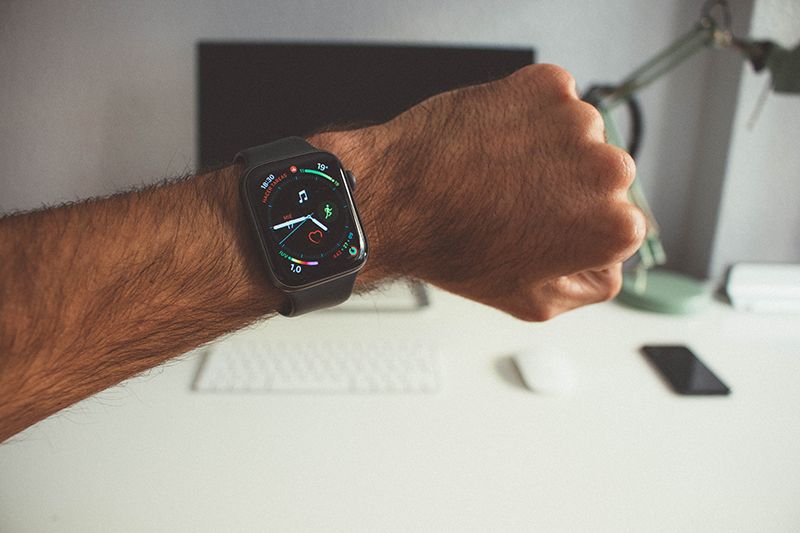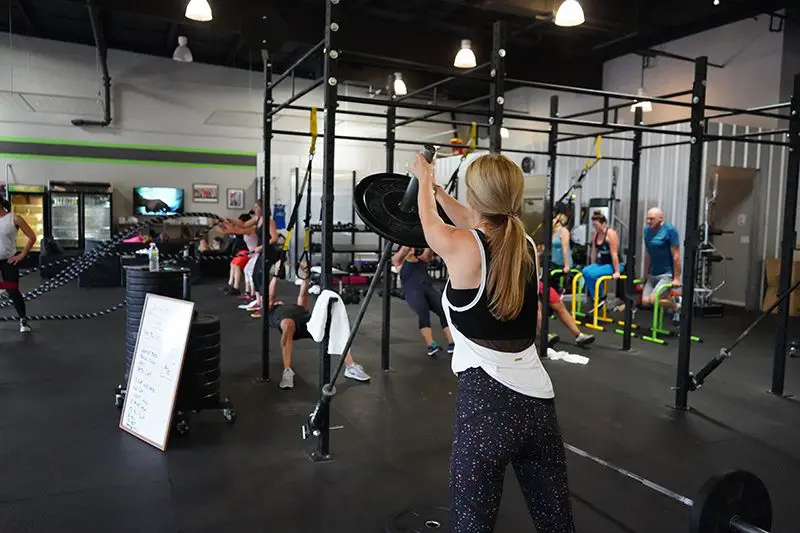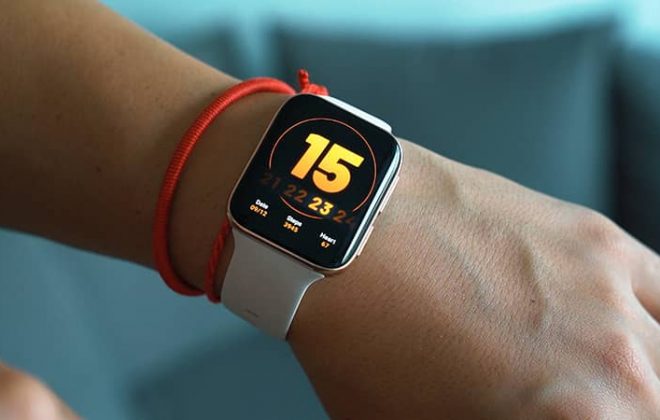18 Practical Time Management Hacks For Athletes And Busy People
Lack of time is a challenge that many amateur athletes face. All of us want more hours in the day – be it for training, recovery or simply to spend on ourselves. However, life seems to always ‘get in the way’ and force us to skip sessions or do something that undermines recovery (like an evening out with friends). This is what time management hacks for athletes can help to navigate and get the most out of every 24 hours.
For me personally the jump from studying in the university to having a day job was quite palpable. Previously, I used to get everything done with time to spare, but with demands of a day job I noticed that the structure I enjoyed in my kayak training was fading away.
‘If only I had more hours in the day’, I thought – and I’m not the only one. Many college athletes drop their training altogether while transitioning to ‘adult life’. Only to find years later that something is missing in their life…

But then I learned what an Ironman triathlon is and discovered how many uber-productive people train for it. Thousands of individuals who perform at the highest level and combine 15+ hours of training every week with a day job (or even running a business) and family.
That made me realize that it’s not about the amount of time you have, but rather how you use it. No excuses.
Time management hacks
This is where time management comes into play. Ultimately, it’s all about planning ahead and using the time we have as effectively as possible. Sure, it’s hard to work around a busy schedule, but it’s never impossible.
There are always ways how to get stuff done even when there seems to be no time for it. We can find time to do anything, as long as we attach a priority to it. And for athletes to be successful that priority should be training & recovery.
My Ironman training taught me a lot how to be efficient and include a lot of training into an already busy schedule. Below I’m listing time management hacks for athletes that can be used in both sport and daily life.
Some of these might seem challenging at first and I agree. It will require a lifestyle change, which is why many struggle with it. As I gradually transitioned to a new lifestyle, though, I appreciated how much can actually be done. And that motivated me.
#1 Train in time not distance
One thing that helped me adapt my training to demands of a daily job was to plan and execute sessions based on the available time. That is, running 40 minutes, instead of 8-10km. Or doing 20 minutes of core exercises instead of 3 sets of 9 exercises.
The beauty of this method is that 30 minutes is a fixed time period. It won’t extend if the weather is bad or you’re feeling down or take too much rest between exercises. Such session can be scheduled as any other appointment and will not impact the rest of the schedule.
#2 Use calendar effectively
Speaking of appointments – there is a wisdom in a saying ‘only what gets scheduled gets done‘. In fact, that’s exactly what David Allen proposes in his widely popular book ‘Getting things done’. The best way to ensure something gets done is to put it into your calendar.
The same idea can be applied to training. The best way to ensure sessions get completed even on busy days is to schedule those just like any work appointment. This practice attaches a priority to a specific activity and frees up time to actually do it.
#3 Train in the morning
Waking up early was hard for me to adjust to, but proved to be one of the most important time management hacks for athletes. I learned first hand that in our crazy fast world the only time in your agenda you can really control is when everyone sleeps.
If possible, schedule your workouts early in the morning – before work. The later in the day we leave our workouts for, the greater the chance for something to come up and interfere with our plans. When absolutely pressed for time I found that a 30 minute fasted session done right can provide a better effect than a 1 – 1.5 hour one. And one can always wake up 30 minutes earlier…
This hack is also a deal breaker when you travel. Personally, I’m too busy or too tired after a day of exploring to exercise in the afternoon. Exercising in the morning helps me to stay consistent even when I’m on the go.
#4 Do a little every day
Try to avoid days of inactivity. Yes, we should have recovery days, but not moving actually does the body more harm than good.
Our body responds best to consistent stimulation, so try to do a form of exercise every day. Also, frequent exercise is the best way to ensure training consistency and promote small supercompensations that improve fitness. And consistency is much more important than volume or intensity.

#5 Have a list of standard sessions
Create a list of your favourite go-to training sessions and then categorize it for every purpose (endurance, strength, power, etc.) and duration (i.e. 20-40-60 minutes). This will serve as a ‘shopping list’ which you can pick a session from once you have some free time.
The goal of this is not to create a ‘customized’ training plan for yourself. Instead, having such standardised list of sessions helps to remove the though process when scheduling sessions on a short notice. When something changes in the agenda (meetings run late or get cancelled) you don’t need to think what to do – just pick the appropriate session and execute.
Time management is like a game of tetris. You add tasks & appointments piece by piece until you have space left.
For instance, if a meeting with friends gets postponed by 1 hour it’s a great opportunity to do a 40-minute core session or a quick 30-minute run. Much more effective than aimlessly surfing through social media.
#6 Switch to shorter & more frequent sessions
Long and intense sessions – like efforts above threshold – give a lot of training benefit. No doubt about it. However, they do come at a high cost as well. These sessions add a lot of fatigue and often require several days of easy sessions to recover from.
A much more effective approach is to shorten sessions and do more of them. Since sessions become less taxing, the body can recover quicker and athletes can train more frequently. Especially for endurance athletes this strategy will provide a much better and more consistent adaptation than one very long or really hard session every couple of days.
It’s the same principle that fartlek training is built on. Doing many shorter repeats with breaks in between allows to include more time at desired intensity than one consistent long and hard interval.
Make use of lunch and other breaks
When you create a ‘cheat sheet’ with go-to sessions (as explained in the hack #5), use any break to squeeze in one.
For example, lunchtime is a great opportunity to break the monotony of sitting. Let’s be honest, not always we go for lunch with colleagues. Or, if we do, we can use a little alone time sometimes.
If you have a gym at work, take 30 minutes to do a short explosive strength session. Or just go for a short run with a couple of hard surges.
Double days
Long training sessions are key for building overall endurance for any athlete. However, often carving out 2 hours for a session is not possible due to family commitments, work projects or other things.
A good way around it is to split the long endurance session into two smaller ones and do them on the same day. You’ll still get a lot of endurance benefits and it will be easier to manage physically and mentally.
This variation of a long run is a great way how to boost endurance and increase physical resilience for those athletes who don’t have high weekly mileage as well.

The Resilient Athlete
A Self-Coaching Guide to Next Level Performance in Sports & Life
Are you aiming to become a resilient athlete who is able to withstand any pressure? Be able to jump on any opportunity? Take any challenge life throws at you head on?
Then this book is for you.
Learn more#7 Meditate
Meditation might not be on people’s radar when we talk about saving time. After all, it requires time to do. But, ironically, it’s the type of thing when you invest a little to get a lot.
Consistent meditation practice helps to reduce stress and improve focus, which sets us up for a more productive day. Moreover, the reduction of stress (both acute and chronic) carries lots of benefits that save time and effort along the way – sleep gets better, recovery is quicker, we have more energy and so on.
I believe meditation is still one of the lesser known time management hacks for athletes and other busy people. Personally, I noticed that I’m able to fight distractions better after I’ve meditated in the morning, which also keeps my motivation high.

#8 Optimize recovery
Not all time management hacks for athletes focus on saving time. Speeding up recovery is another great way to improve the quality of training and have more energy throughout the day.
Training serves only as a trigger for adaptation and athletes actually improve fitness during recovery. It’s important to recognize this fact and optimize rest period. Here are some ideas to get started:
- Improve the quality of sleep
- Balance the training load with very easy efforts
- Eat a less heavy diet
Personally, after I stopped eating meat I noticed that my body recovers much quicker and I’m able to complete more training sessions during the week.
Read also: 14 Effective Ways To Reduce Muscle Soreness And Speed Up Recovery
#9 Change your habits
The amount of free time we have really comes down to how we spend it. And how self-disciplined we are.
One of the most productive time management hacks is to look for areas where we waste time and be honest why we do that. For example, whether watching a new TV series or playing video games is really ‘relaxing’ or just a way to postpone action and procrastinate on something?
I used to think that I don’t have enough time to do everything I want. But then I went and did something ‘crazy’- like binge watch a new TV series or play video games for hours.
We might find comfort about our bad habits in telling ourselves that we’re tired and need rest. But in reality, a walk outside or a very easy jog is a much better way to mentally relax after a challenging day than sitting on the couch.
While we don’t need to explain anything to anyone, we need to be aware of our habits – good and bad. After all, we’re responsible for all results we get. As they say ‘we are what we consistently do – success is therefore a habit’.
Read also: 9 Strategies To Develop Good Habits And Make Them Stick
#10 Train indoors
The indoor training movement has been going through a growth boom lately. More and more professional, amateur and hobby athletes embrace it because of the high quality training it enables.
In particular, Zwift has revolutionalized indoor training by ‘gamifying’ it, making it social and showing how cool it is to not stop for traffic lights or be impacted by bad weather.
But not only that – having a bike trainer at home (or a treadmill) means you don’t need to spend time dressing up and mentally preparing to go out. You can quickly jump on the trainer and execute a high quality session in as little as 30 minutes. All while listening to a podcast or watching a documentary.
In fact, that’s exactly how I was able to save a lot of time for my Ironman training.
#11 Quality over quantity
Not all training is good. In particular, for amateur athletes who don’t have the luxury of organizing their days around resting a couple of extra hours every week can be too much.
Often athletes don’t align their training with the stress of their busy lives and use elite athletes’ training plans, which usually leads to doing just a little bit more than they can fully recover from. Over time this debt accumulates and results in training plateaus, over-training or even injuries, erasing months of progress.

To avoid that and be more productive in training and life a good idea is to clean up the training plan. Remove aimless training sessions without specific focus (i.e. those at moderate intensity and ‘feel the pump’ ones). Instead, organize the week around key sessions – those that are important for race distance and overall goal.
‘Polarization’ is a great way how to improve the quality of training. Do 80% of the volume at low intensity (Zones 1 and 2) and spend remaining 20% going really hard – do an intense strength session or intervals in Zones 4 and 5.
Read also: Train Smart – Practical Guide to 5 Exercise Heart Rate Zones
#12 Carry gear with you
If you have a car, transform its trunk into a portable dressing room. This way you won’t need to spend extra time going home to get dressed or pick up gym clothes.
In fact, having all the gear you need (sneakers & run apparel, swimming gear, etc.) means you are not bound to one single place for training or even a specific time. You can hit the gym or a pool before work. Swim in a lake on your way to work. Or go running right after work.
Moreover, having all the gear you need with you is a great way to explore new routes. You can drive to your favorite trails or stop at the park you really like.
#13 Listen to audiobooks and podcasts
To avoid boredom and be productive, I like to combine easy training with listening to an audiobook or a podcast. This way I don’t feel bad about running or cycling instead or using the time for something useful.
In fact, I learn a ton along the way, so I always look forward to these easy base building sessions.
The length of an ‘average’ audiobook is roughly 6-7 hours, which takes 1-2 weeks to listen to (and even make notes). With enough dedication that’s at least 2 books per month (or 24 per year)!!
#14 Train alone
As said, not all time management hacks will fit every athlete‘s personality. This is one of those.
Training in a group means we have to give up a certain degree of control over our schedule. Inevitably, some people will be late for a session, while others will take more time to get dressed. Some will be less fit and you’ll always have to wait for them, while others will deliberately go slower and use the time to talk and catch up on stuff.
When training alone you’re not facing these setbacks and can better control your time. On top of that, training alone develops discipline and mental strength. This, in turn, improves the quality of training and results in better race performances.

#15 Have organized nutrition with you
Often making a session or not comes down to whether we have energy for it or not. I had so many bad sessions when I didn’t feel like myself only because I haven’t eaten properly before that.
What I like to do now is to batch-prepare a few overnight oats (my go-to breakfast) and have some energy bars with me just in case I have time for an intense session on a short notice.
Having some trail mix or a smoothie (purchased or homemade) is a great post workout snack.
#16 Optimize & automate things you do
We go through a lot of tasks on a daily basis and most of those are repeatable. To save time every day try to look for time wasters and ways how to automate things.
Bulk similar activities together to save time on getting ready and executing them. Create checklists or routines for daily tasks to reduce the amount of time and effort it requires to start.
Here are some of the ideas for automation from my experience:
- Do a meal prep for the whole week
- Create email processing filters or unsubscribe from useless mailing lists to avoid spending time reading mails
- Automate bill payments
- Have a robot vacuum cleaner to save time on cleaning up
- Create a standard shopping list and order groceries online to avoid aimlessly walking around the shops
- Create a morning routine to be highly productive in the morning
Read also: 5AM Morning Routine – Best Habits For A More Productive Morning
#17 Use your commute
Commuting is one of the great time management hacks for athletes and everyone else. If you live anywhere closer than 10K from your work, a great option is to bike to work. Cycling such distance will take less than 30-40 minutes even for a slow cyclist. Often that’s less than a commute by car or public transport would take.
Cycling is a great alternative to driving and public transport. It avoids traffic jams, reduces the risk of catching a cold (from being in a crowded space) and also an opportunity for some exercise.
For commuting you don’t need a fancy road bike – any bicycle will do. It’s best to treat it as a recovery or easy ride, though – no higher than Zone 2. Just enough to get the body moving, wake up and turn the legs over to utilize any leftover lactic acid.
#18 Focus on the goal
Finally, time management is not only about having the time to get everything done, but also not doing things that shouldn’t be done in the first place.
A good practice is to ask yourself on a consistent basis whether what you’re doing moves you closer to achieving your goals or just keeps you busy. If it doesn’t, find a way to not do it (either drop it or delegate it) – focus on things that do matter instead.
Did you find this information useful? Share the post with others using the buttons below.
Have an opinion? Share via links below and tag @theathleteblog
Tags In
Andrejs
GET A FREE TRAINING PLAN
Subscribe to my email list and get access to a free 4-week “back in shape” training plan
You’ll also get two full-body strength sessions and some other goodies!

How did I get here?
Hey there! My name is Andrejs and I am here to inspire, entertain and get you fit for any adventure.
I went from being an over trained pro athlete to an endurance coach sharing how to listen to your body and live life to the fullest.
Traveling, new sports & activities brought new meaning to my training and made it much more effective, fun and enjoyable. And I'm here to help you do the same.


